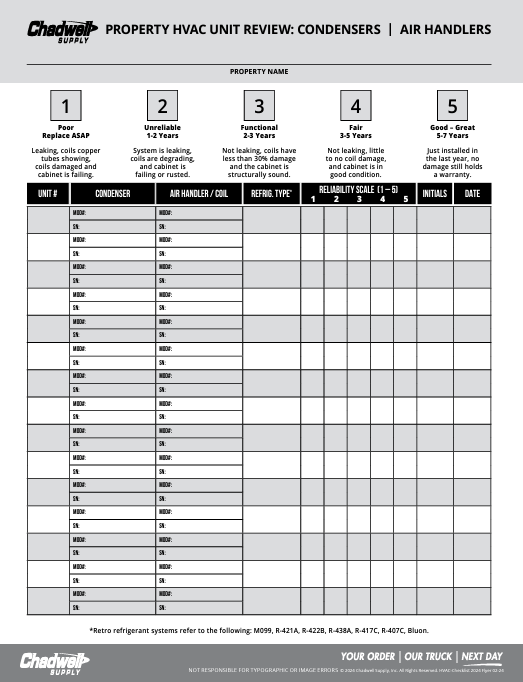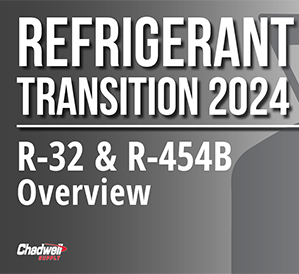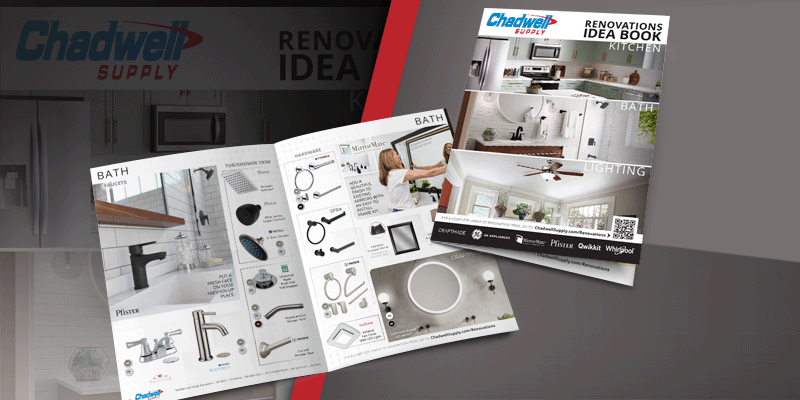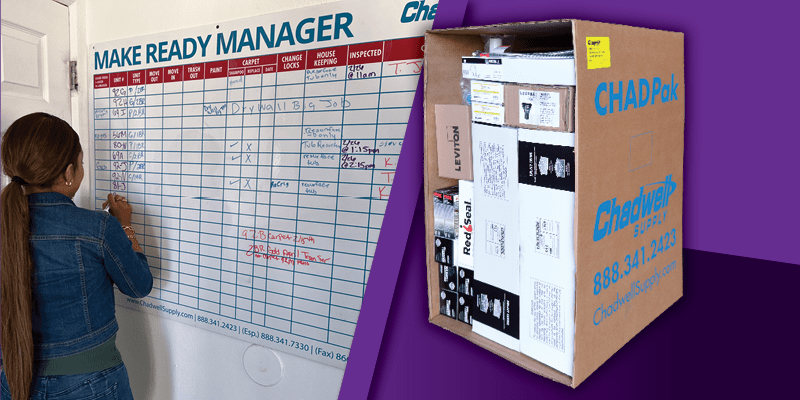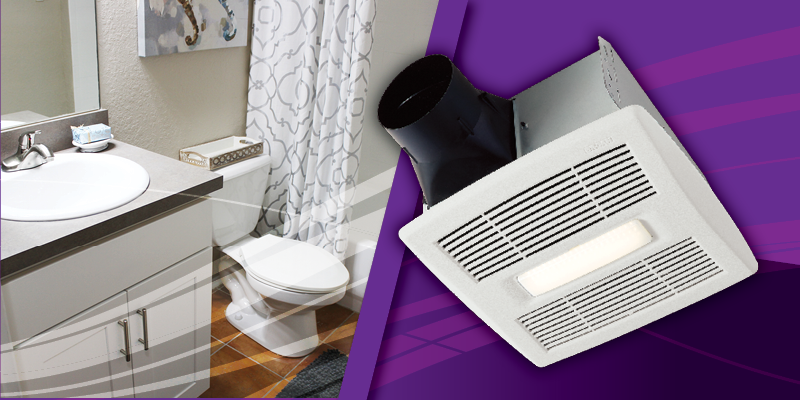A2L FAQ: Your Questions Answered
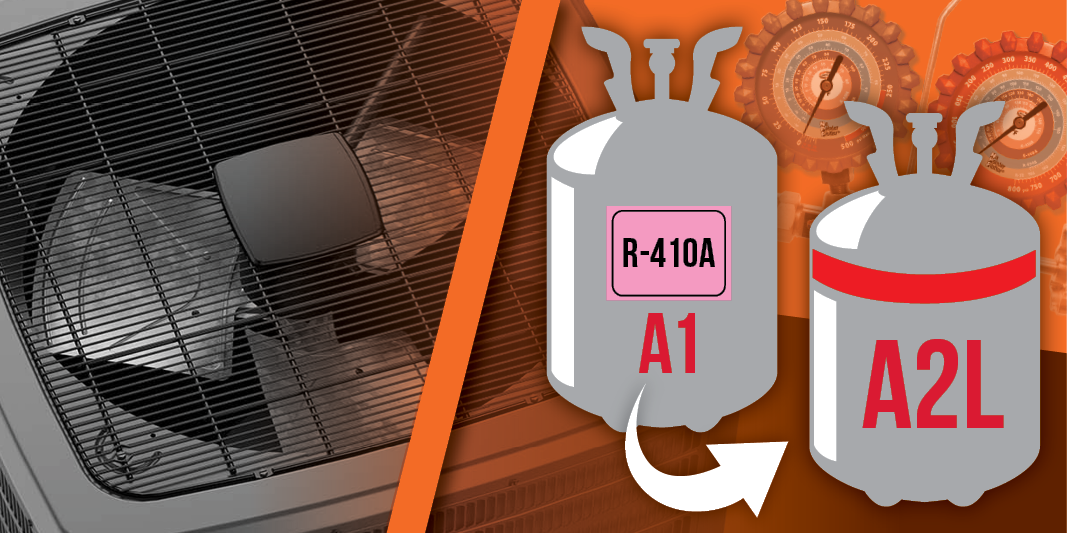
As of January 1, 2024, production was reduced by 40% for all HFC refrigerants, including R-410A. As a result, a new type of refrigerant must be used. A2L refrigerants with a low Global Warming Potential (GWP) and A2L compatible equipment will begin replacing the 410A units we are used to. What are A2L refrigerants? Are they safe? And how will they affect the multifamily industry? We asked our HVAC experts to weigh in.
8 A2L Refrigerant Questions Answered
Q1 — Why are multifamily communities and suppliers transitioning to A2L refrigerants?
The United States Environmental Protection Agency (EPA) has enacted new regulations limiting certain refrigerants. The AIM Act authorizes the EPA to reduce the production of hydrofluorocarbon (HFC) refrigerants that have high Global Warming Potential (GWP). This phase down will have significant impacts on HVAC repair and maintenance in the multifamily industry.
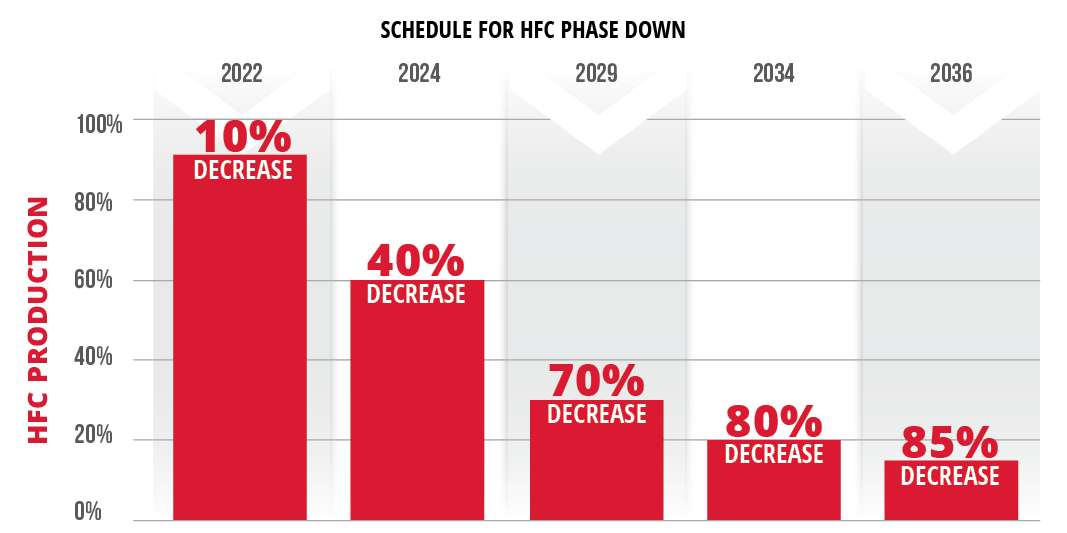
Q2 — Which refrigerants are included in the phase down?
- R-410A for air conditioners, heat pumps, PTACs, mini-splits
- R-134A for commercial refrigerators
- Drop-in replacements for R-22 including R-407C, M099, Bluon, R-438A, R-421A, R-422B, and R-417C
NOTE: This is not meant to be a comprehensive list of all refrigerants affected by this legislation.
"This reduction is a phase DOWN, not a phase OUT. High-GWP refrigerants, like R-410A, are not going away, but the supply will be gradually reduced. As the supply is reduced, costs will increase. We have already begun to see cost increases across the market."
Q3 — What is GWP and why is it important to residential HVAC?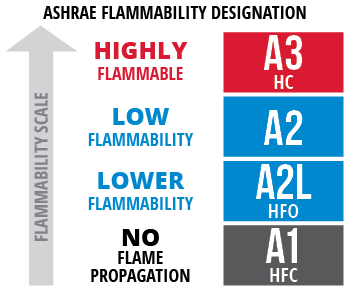
Global Warming Potential (GWP) is a metric used to measure a refrigerant’s environmental impact as a greenhouse gas. The new GWP limit for residential refrigerants is under 700 GWP.
- Hydrocarbons (HCs) have minimal GWP but are highly flammable (Rated A3).
- Hydrofluoroolefins (HFOs) have lower GWP than HFCs and lower flammability potential than HCs (Rated A2L).
- Hydrofluorocarbons (HFCs) can have high GWP and little potential flammability (Rated A1).
Refrigerants are classified by safety rating as designated by the American Society of Heating, Refrigerating, and Air Conditioning Engineers (ASHRAE).
Refrigerants are classified by safety rating as designated by the American Society of Heating, Refrigerating, and Air Conditioning Engineers (ASHRAE).
Q4 — What refrigerants meet the new GWP standard?
A2L refrigerants, including R-32 and R-454B, offer similar operating characteristics to legacy refrigerants and are:
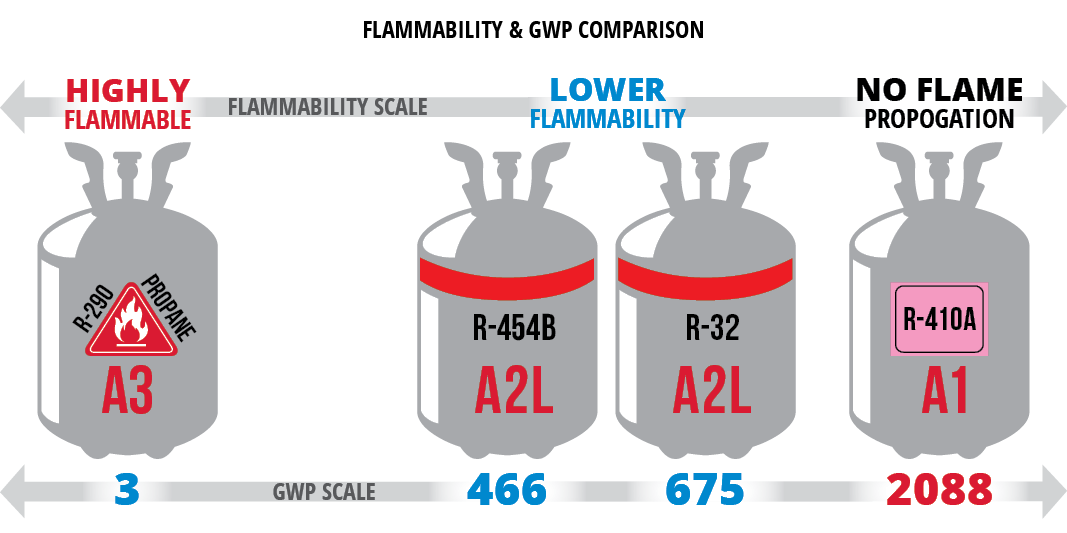
Q5 — How safe are A2L refrigerants?
A2L refrigerants are rated as having low flammability potential. When handled correctly, using the proper equipment and tools, A2L refrigerants are safe and reliable. A2L refrigerants have been used in Europe for decades and have a proven track record.
Q6 — Will there be a “standard” A2L refrigerant in the multifamily market?
No. There will not be a single, standard refrigerant or refrigerant blend that dominates the market. There are two low-GWP A2L refrigerants multifamily manufacturers are focusing on: R-32 and R-454B.
|
|
|
|
· Goodman exclusive · Pure compound like R-22 · Already used widely in Europe and window A/Cs in the U.S. · Charged as a liquid or a vapor · Does not fractionate or have a temperature glide |
· Carrier, AirQuest, and Brothers · Developed for this transition · Charged as a liquid to avoid fractionation · Very low temperature glide (about 2.5°F) |
Q7 — What kinds of impacts should multifamily communities expect?
Multifamily owners, managers, and maintenance professionals should expect 3 impacts to their budget, planning, and/or operations:
- Increased Refrigerant Cost: As the supply of R-410A refrigerant decreases due to the reduced production, demand and costs will increase.
- New Equipment and Tools: Manufacturers are shifting away from equipment that uses high-GWP refrigerant (like R-410A). Installing and maintaining the new, regulation-compliant equipment and refrigerant will require new tools.
- Unfamiliar Refrigerant: Low-GWP refrigerants (such as R-32 and R-454B) are being introduced to the U.S. market. Maintenance teams should have training on how to use and store these new refrigerants properly and safely.
Q8— Where can I get more information about the A2L refrigerant transition?
Learn more about A2L refrigerants in a Refrigerant Transition Webinar delivered by our HVAC experts through Chadwell University.
Listen to The MRO Show on our website or through your favorite podcast service.
Use this Refrigerant Transition Checklist to take an accurate inventory of all HVAC equipment at your property.
Be sure to bookmark chadwellsupply.com/pk in your browser. We will continue to publish more HVAC refrigerant transition articles throughout this phase down process.
Watching the Market
As of January 2024, some manufacturers are already making A2L compatible equipment, parts, and tools. Other manufacturers plan to start later in 2024. These decisions will determine how the market shifts over the next few years. Chadwell Supply is closely monitoring this transition across the entire supply chain to give our customers the best, most up-to-date information.
Important Deadlines
December 31, 2024
HVAC Equipment that uses R-410A refrigerants can no longer be manufactured or imported.
December 31, 2025
Installation deadline for R-410A equipment (must have been manufactured or imported before January 2025).



